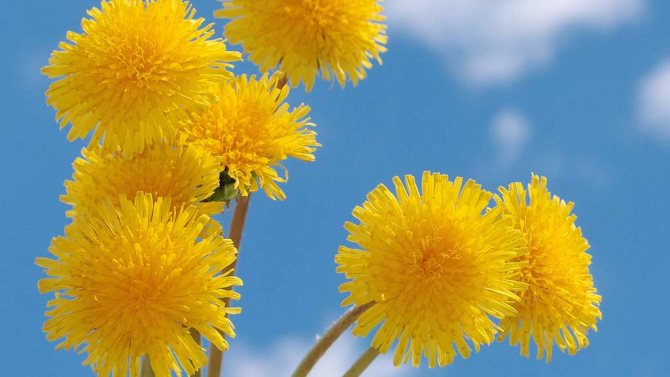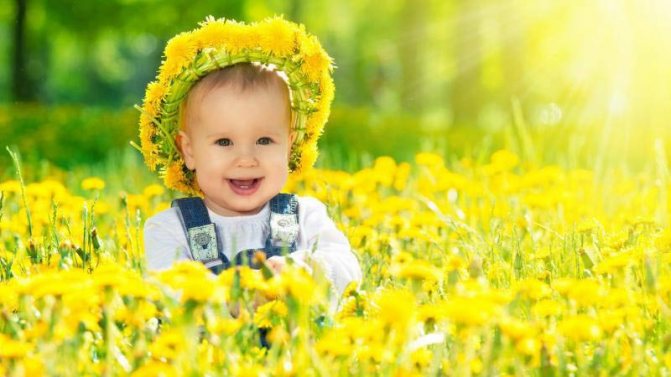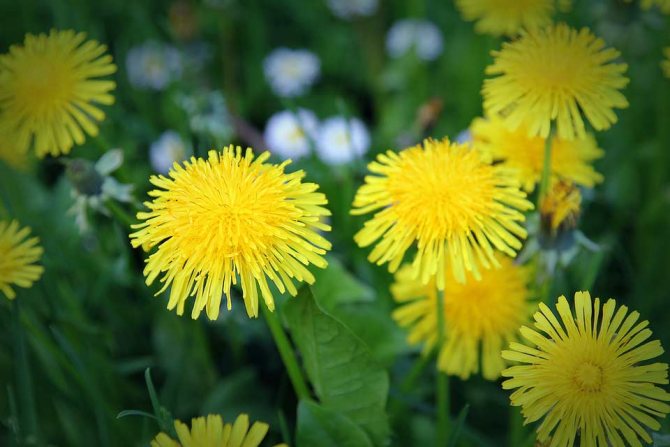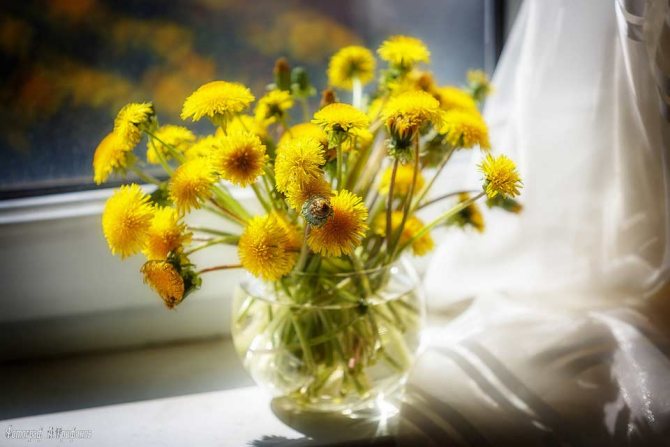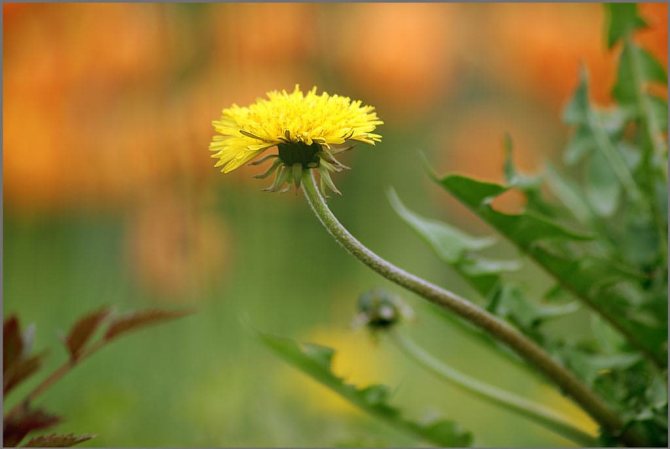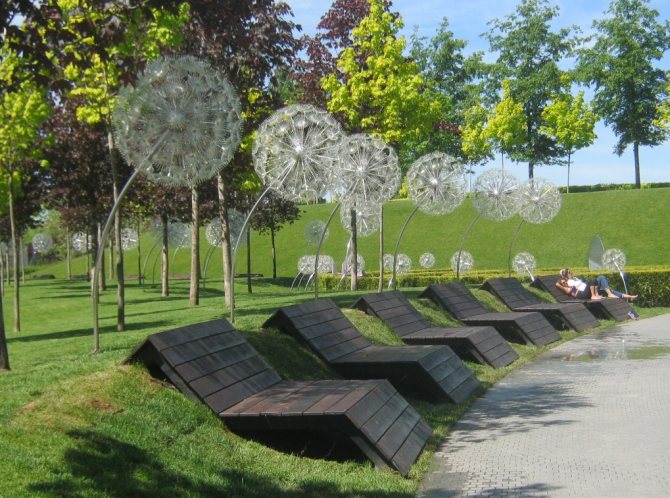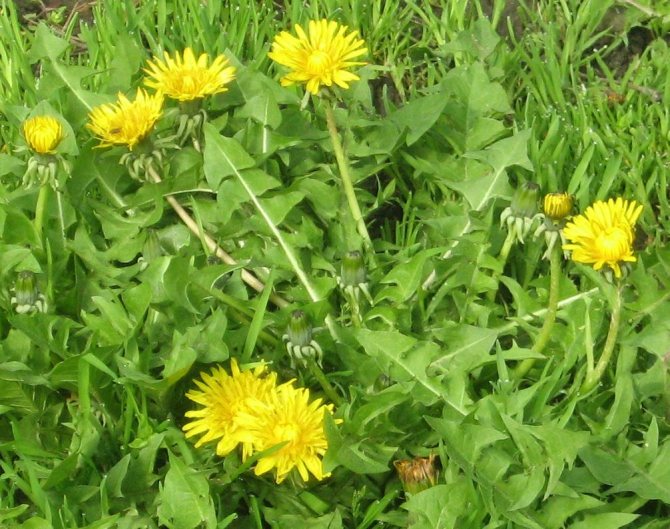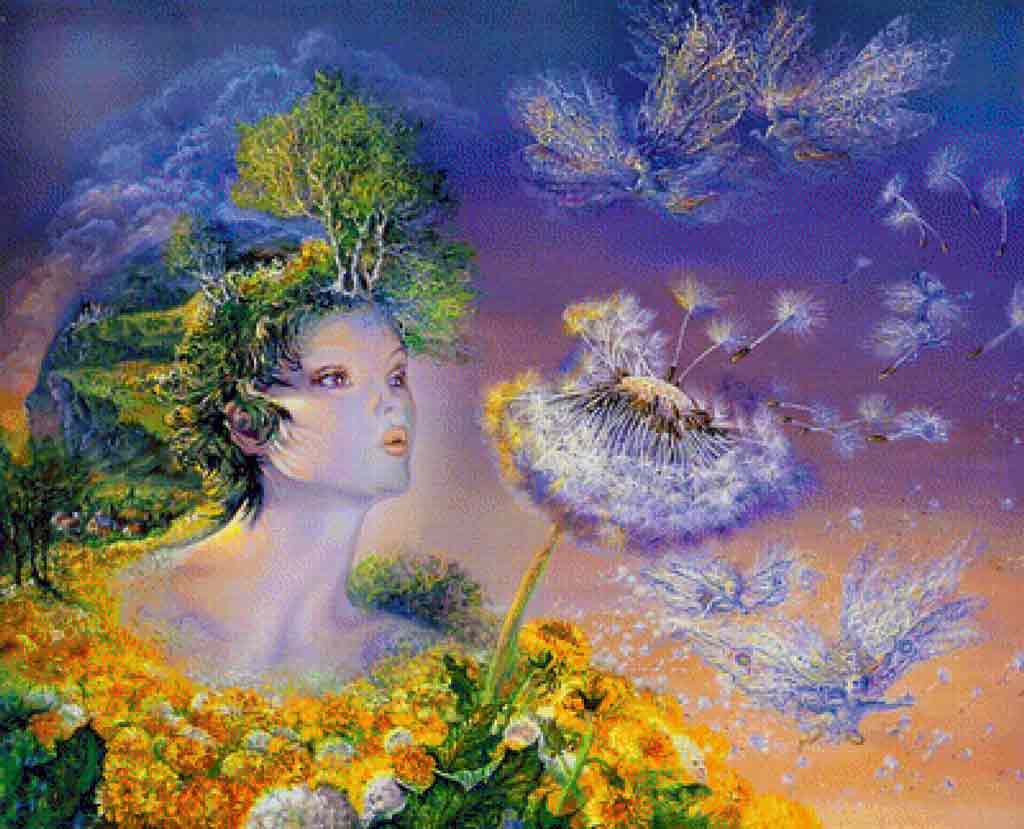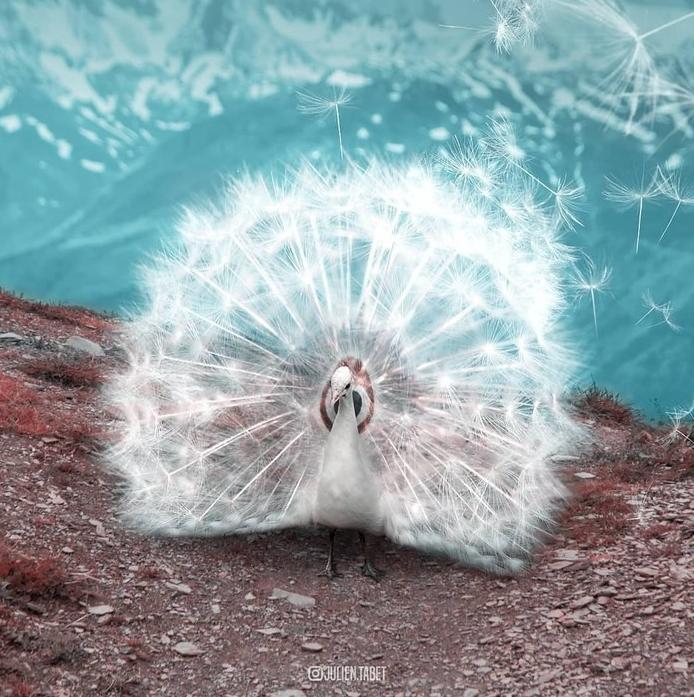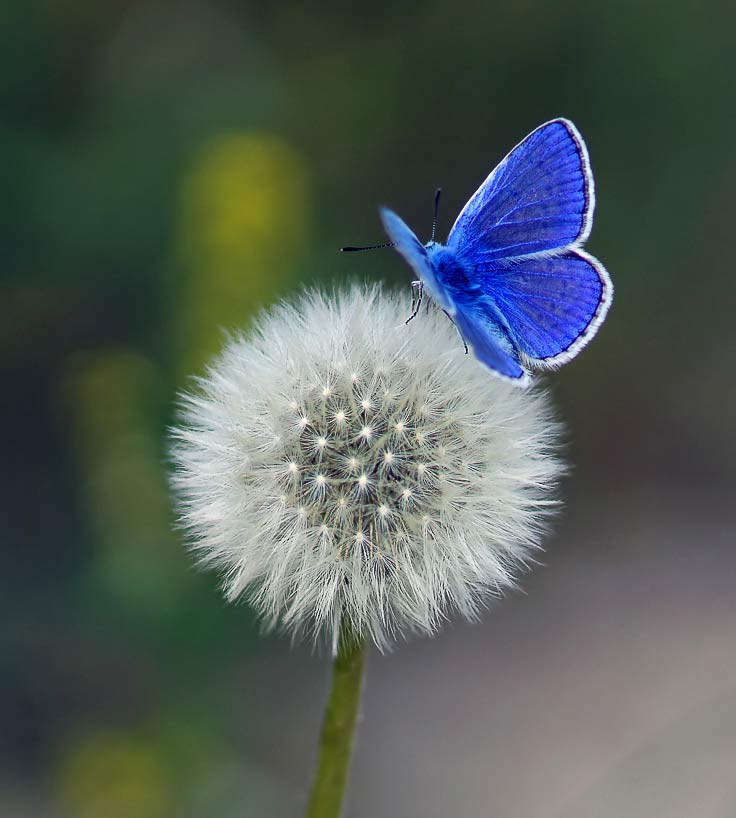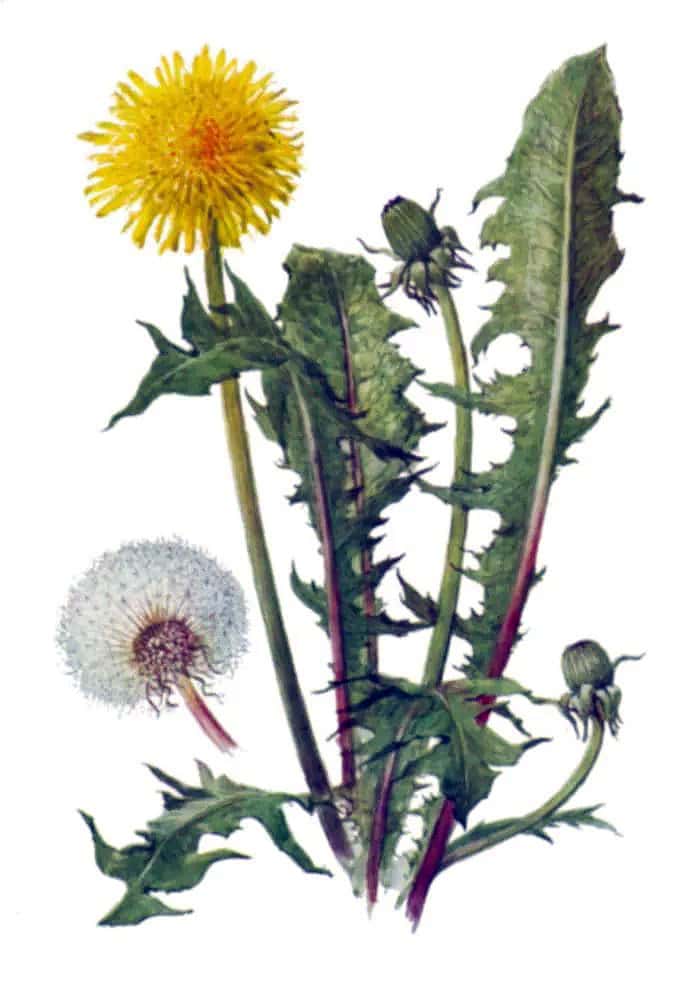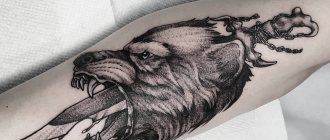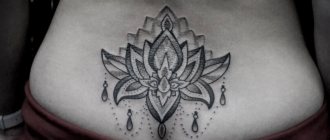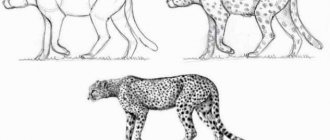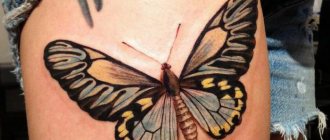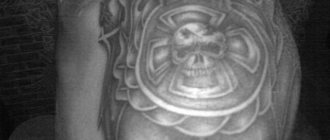Calculate the cost of a tattoo
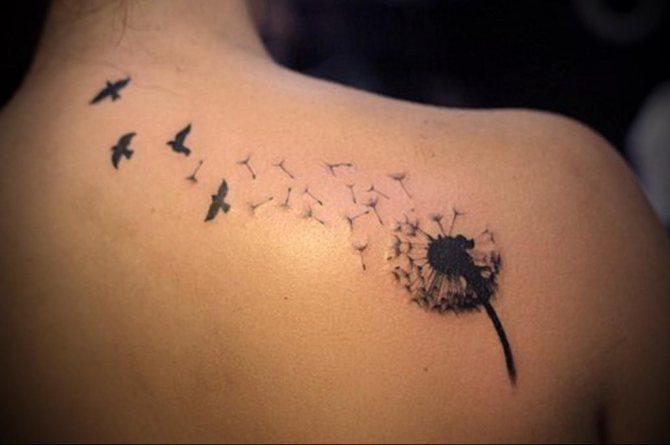
The symbol of the dandelion is universal, but most often tattoos in the form of this flower do girls. It emphasizes the femininity, tenderness of its owner. In addition, the dandelion brings joy, happiness, good luck in life.
Consider why the popularity of the dandelion is increasing every day, and tell us how to stylistically correct and beautifully design a chest picture.
Flower Calendar. Dandelion - happiness and devotion
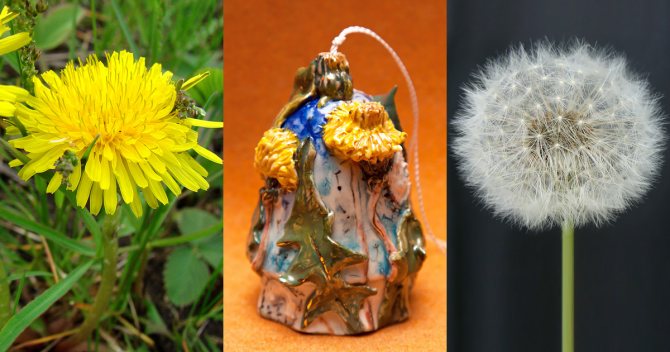

"By the great roads, by the small forest paths, in the green wide meadows, even at the very thresholds of village houses, dandelions bloom. Everyone knows these simple flowers that look like a little sun with golden ray petals. Dandelions bloom all summer long, and their ripe seeds are gathered in a light, fluffy ball. If you blow on the ball - the light flying seeds will float, fly in the air. That's why the flower is called "dandelion" - so I.S. Sokolov-Mikitov introduces readers to these flowers in his stories.
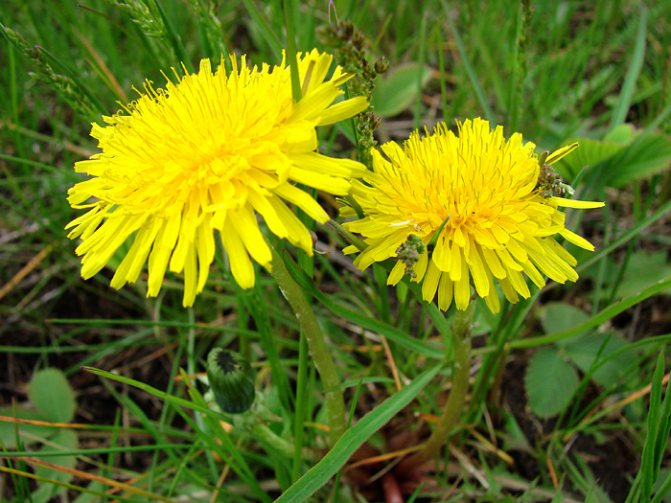

Photo by Yu.
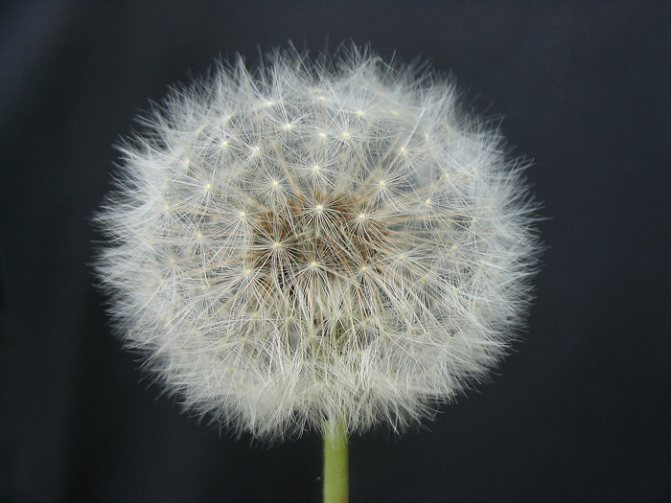

Photo by A. Salcutsan
In the encyclopedia is given the Latin name of the dandelion - "Taraxacum", referring to a type of medicinal plants. It was called dandelion, derived from the verb "to blow" or "to blow around". In the same people this yellow flower is called puffball, doinik, hammerhead, air flower, butter flower, gryadunitsa, Jewish cap and Russian chicory. The English name "dandelion" was borrowed from the French and literally translated as "lion's tooth" because of the shape of the roughly toothed leaves.
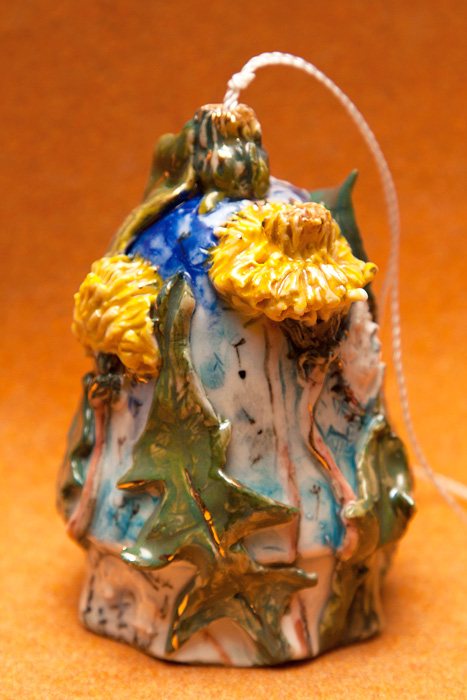

A bell with dandelions. Author Mila Arkhipova. Collection by Y. Churilova
In our flower calendar, the dandelion will be the flower of July, although it delights with its beauty almost from April to September. All sunny day we can admire dandelions, with sunrise their petals begin to open, and in the evening, when the sun goes down, petals curl and flowers fall asleep.
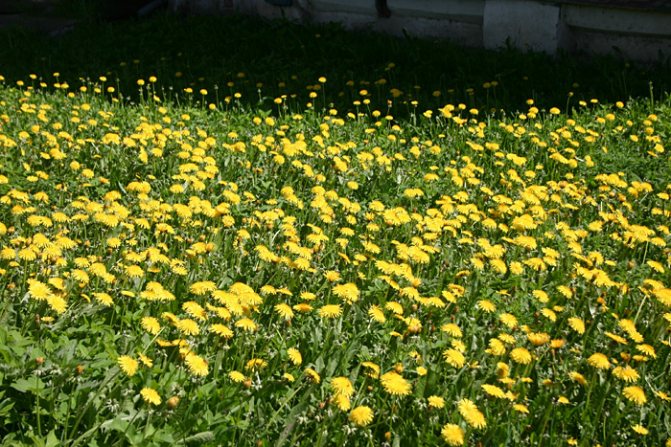

Dandelions. Pereslavl-Zalessky. Photo by L. Frantsek
There is an old legend as to why it happens: many, many years ago the flower goddess descended to earth, she wandered through the fields, and meadows, and woods, and mountains in search of the most beautiful flower. And so in one park she met a red tulip and asked it, "Where would you most like to live?" "I would dream of living in the velvety grass of a meadow by an ancient castle," replied the beautiful flower, "I would be admired by a princess and talked about my beauty every day." The goddess looked sadly at the flower and turned to the rose. "And I would like to grow and twist on the wall of this castle, I need help and support," replied the rose. The flower goddess got up and hurried into the forest, where she found the violet. The violet answered: "I want to live in the forest away from strangers' eyes, the stream will cool my feet, and the tall trees will protect me from the bright sun. Then she talked to the sunflower, but it only wanted to bask in the sun, to the orchid, which dreamed of dancing, to the daffodil, which did not even answer anything, as it was busy narcissism in the reflection of the water. The girl still walked the earth for a long time, and one day, in a meadow, she met a stout and strong dandelion. Asking the same question, she heard: "I would like to grow up where happy children run and play, it would be wonderful if on the way home they found me and gave me to their mothers. I would like to grow up by the roadside, in fields flooded with bright sunlight, among the rocks in the yard. The main thing is to bring people joy and happiness with my bright yellow color. The flower goddess was delighted, placing her hand on the curly head of the dandelion, she confessed that it had become her favorite flower. "You will bloom from spring to fall, and become a favorite for all the children," whispered the sorceress.
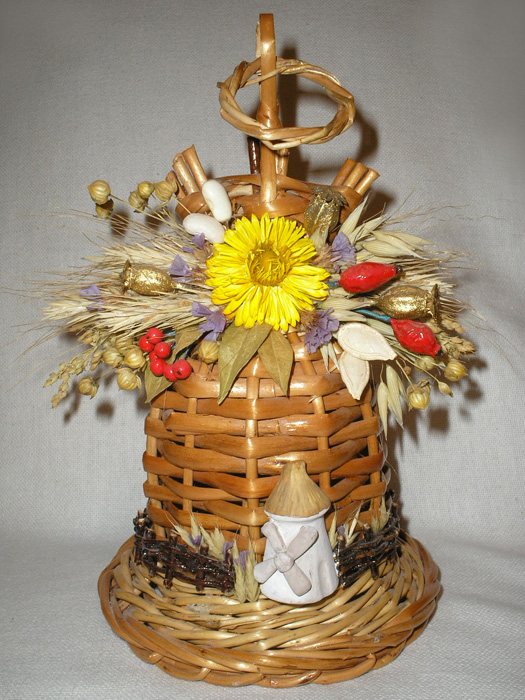

Dandelion Bell. Collection of I. Koltakova
Therefore, when dandelion flowers shine with thousands of suns around, the mood is lifted and one can feel the joy of a sunny day.
The floral meaning of the dandelion is that it is a gift for a loved one, bringing happiness and fidelity. And in the language of flowers, dandelions mean joy, a smile and devotion.
The dandelion is not only a beautiful flower, but also an amazing plant and can be used to make salad, jam, wine, coffee and even honey.Remember how Ray Bradbury described dandelion wine? - "Caught and bottled summer." And because of its many medicinal properties, the dandelion is also called the "solar pharmacy".
Source
The meaning of tattoos for men
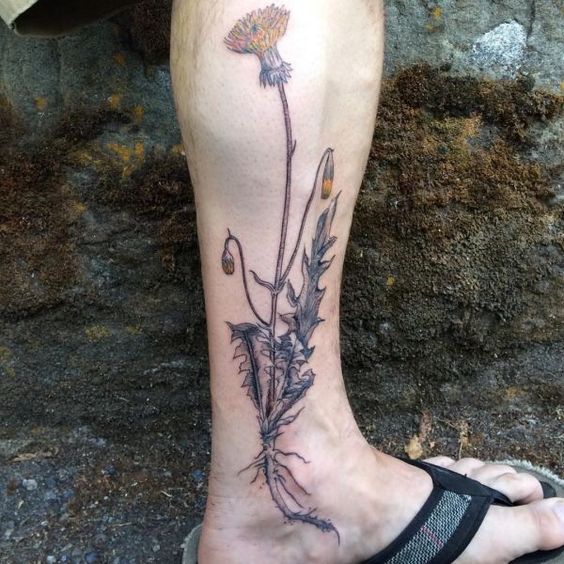

Men most often apply tattoos to their shoulders. The dandelion is considered the flower of the military, as they are forced to move from place to place on duty, like the flying seeds of the plant, and start their lives in new lands.
A man with a tattoo of a dandelion is not afraid of difficulties, overcomes them with ease and achieves his goals. Such a guy does not like to be sad, and his life is like an exciting journey. Going through the world with him is easy and carefree. At the same time, the man is gentle, romantic and charges with his optimism.
Dandelion
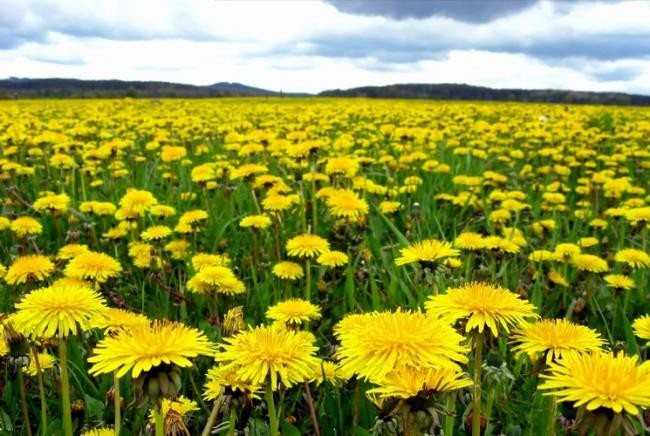

DANDELION (Latin Taráxacum). There are several versions of the origin of the Latin name. According to one, it comes from the Greek words for "cure" and "eye disease". According to another, it comes from the Greek "to soothe". The third is from the word combination "wild lettuce": the young leaves of the dandelion are eaten as a salad.
The word "dandelion" is of Moscow origin, from the verb base to blow or blow off. At the slightest whiff of air, the fluffy flyers detach from the flowerpod and fly away, leaving a "bald head". Associated with this property are its folk names: dandelion, downblower, wind-blower, flyers, air flower, bald head, Jewish cap, kulbaba. For its early flowering and healing properties, it was also called "March bush," "elixir of life," "grandmother's grass."
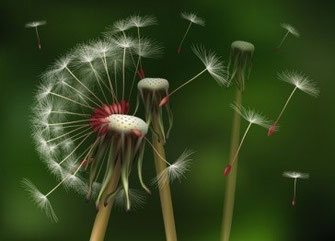

In Christianity, the dandelion, as one of the "bitter herbs," became a symbol of the Lord's Passion, and it is in this capacity that it is depicted in scenes of the crucifixion. But, as with almost all plants, its symbolism is ambiguous. And although the dandelion is a traditional symbol of grief in general, at the same time, according to folk beliefs, it symbolizes the power of the sun and light, is considered a flower of fidelity and happiness. Its seeds, flying away at the lightest blow, symbolize the transience and perishability of human life. In the language of flowers dandelion means happiness loyalty and devotion. But a bouquet of dandelions suggests that the relationship is likely to be fleeting, can suddenly end.
Recorded by hereditary Siberian healers Tsynkin old legend explains why this flower is called "grandmother's grass." A maiden walks through the woods. She saw a hut. She went inside. The hut is dark, and someone is moaning. "Who's there? Answer me!" - the girl says and hears a voice: "Light the light. You'll see!" The beautiful maiden lit the incandescent light, crossed herself over to the icons, and saw an old woman lying on the stove, crying. "Thank you for coming to see me," says the old woman. - God sent you, that I did not die, and did not take away with me the wisdom of life. Swipe away the cobwebs, light the stove, bring me some water, and make me drunk. I will not be able to eat the grass with a golden head, put the leaves in water and feed me. The roots boil twice and serve me. My chest pain will go away, my heart will calm down. Anoint my legs with juice and take away my swelling. The beautiful girl did as the old woman commanded: gave her decoction of roots, watered leaves, smeared her swollen legs with juice. And the old woman came to life, cheered up and commanded that not only the girl herself remembered this miraculous herb, but also tell others about it.
Soon she let Pavlinka and her chicks go out into the yard to eat grass, to dig in the sand, and tied it to a post by the leg so that the hen did not run away. But it was no time: no time grandmother hid in the house, as she twitched, tore the string, and flew over the fence, and after her, the chickens crawled through the holes in it. The family was diligently digging in the grass, and a black kite caught up with them there. When Pavlinka spotted the evil predator, she cackled anxiously, and the children, realizing the danger signal, immediately rushed in different directions and hid among the grass. The desperate mother herself bravely rushed at the kite.
When grandmother Hanulya grabbed the brood of chickens, it was all over. She searched for a long time, but when she saw wisps of feathers, she immediately realized what happened to Pavlinka. She started looking for chickens, but found none. Only unusually bright fluffy flowers yellowed among the grass. Having counted twenty-one of them, grandmother decided that it was her chickens turned into them. Since then, every spring, these florets have been yellowing among the grasses all over the area.
In Ukraine, there is also a legend about the origin of dandelions. They are called kulbaba, literally translated as sharbaba. Once upon a time in the Carpathian Mountains lived a guy named Kul. All the girls looked at him, but he did not pay attention to them, because he fell madly in love with a beauty named Zvonka. She lived with an old woman on the highest mountain in Kosovo. After her husband died, she lived alone. One day she went to a bazaar in Kosovo, saw an orphan girl and took her in. She bought her sweets and outfits, washed her and named her Zvonka. And so they lived together. Zvonka grew up like a red dawn, like a slender spruce.
In the language of flowers Dandelion means happiness and devotion.
In the wild, the dandelion is the most abundant and long-lasting mellifera, blooming from April to September.
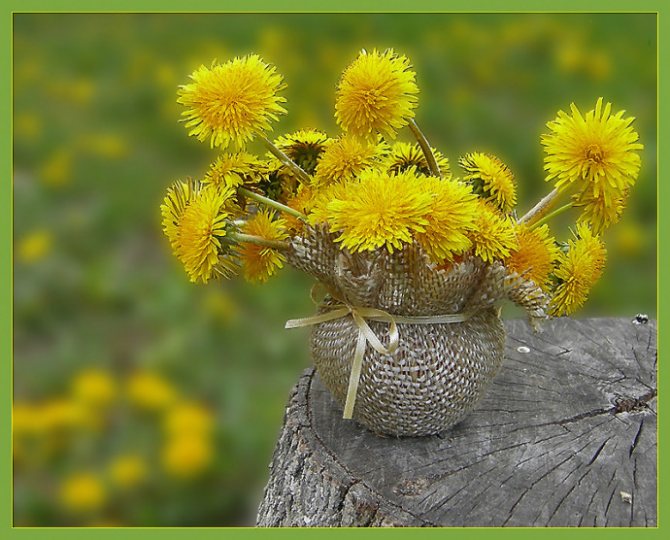

The dandelion has many names: luminous, fluffy, downy, soldier, milkman, doychnik, fly, air flower, butter flower, March bush, gryadunitsa, pustoduy.
The word "dandelion" is of Moscow origin, from the verb base to blow or blow off. It took root as the main one, although very close forms were also known: dandelion, dandelion, pustoduyka, wind-blower.
The dandelion for its inexhaustible life-giving power was called "elixir of life", "grandmother's grass".
The court physicians of Chinese emperors used to prepare an erotic elixir from dandelions that maintained their masculine strength for many years. Herbalists believe that daily consumption of a few bitter leaves and yellow inflorescences of the dandelion, significantly increases male potency.
Young leaves are almost devoid of bitterness. It contains vitamins C and E, carotene, easily digestible salts of phosphorus, calcium, magnesium, iodine, as well as carbohydrates and proteins. Roots accumulate up to 40% inulin by fall. Often called the "elixir of life."
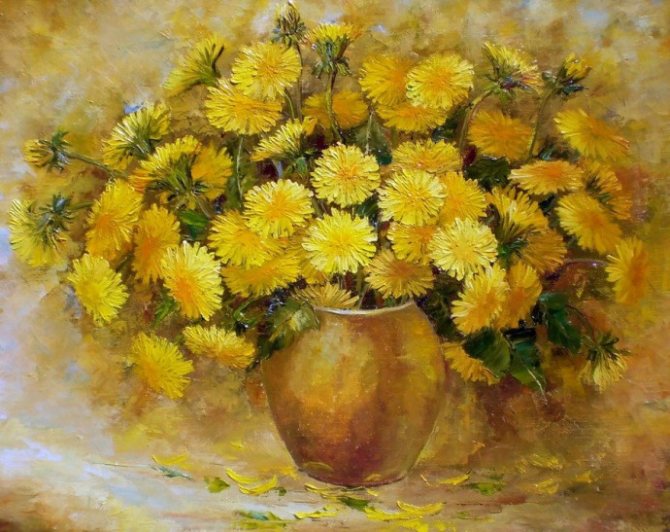

Dandelion is used to improve appetite, regulate the gastrointestinal tract, in cholelithiasis, as a mild laxative. It can be used to treat diabetes, kidney stones, atherosclerosis. Is antihelminthic and anti-toxic agent. It stimulates the cardiovascular system and is prescribed for arthritis. It has wound-healing, analgesic, anti-inflammatory effects, effectively used to remove warts. Helps to increase lactation. It has a tonic effect, eliminates the feeling of fatigue. It is useful in diseases of the thyroid gland.
The first legend of Dandelion
In ancient times, there was a small village on the banks of the Great River. At the very edge of it stood a tiny house, like a little dome. In it lived a pretty little girl. In a green dress and a golden-yellow kerchief, she went round the houses with a wooden milkman, and poured milk into a jug for anyone who wanted it. The girl looked like a good fairy. She was cheerful and smiling, she found a kind word for everyone and brought good news to everyone: she wished health to the sick, reconciled spouses who had quarreled, and predicted a soon and happy marriage for girls.Maybe that is why she was eagerly awaited everywhere, because her friendly smile brought sunshine and spring into even the gloomiest of homes. People nicknamed her the Blow-Off Milkwife for this, as she "blew away", drove away from them heavy thoughts and bad moods. The nickname sounded so cute that it did not offend the girl. The Little Milkwort grew up and grew fond of the Lark for his song without words. This song thrilled her to the core. The whole world sounded to the girl by the Lark's song. Whether the goat shakes her head and the bells on her neck jingle, and the girl already runs to see if the Lark flies over the run. If an oriole whistles on an old linden tree, the Milk Dancer immediately rushes to that call, thinking that the Lark is waiting for her. And at night she dreamt.
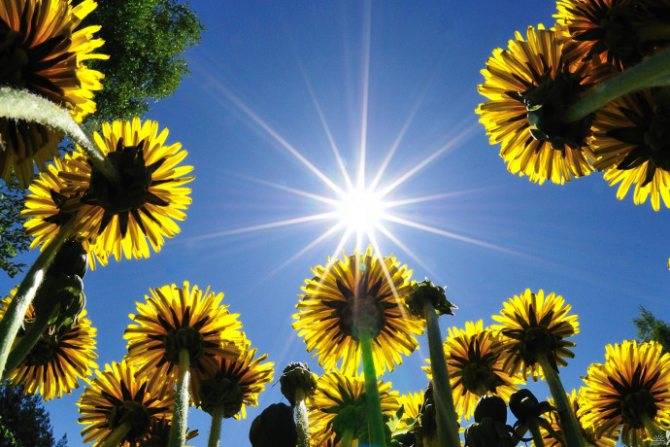

Happiness overwhelmed the girl's heart. But it didn't last long. She ruined her own great love. She wanted to know the words of the Lark's song.
He descended to her from the sky and sang:
Tender is my love for you, as the sun's first ray, but beckons to the sky, and his call is mighty.
The girl was seized by a desire to hold her beloved, to leave him by her side forever, and she rushed to him with a plea to do so. But, a free bird, Lark soared into the sky and flew away. Only now did the Milk-Blonde realize that, having wanted to deprive Lark of his freedom, she had lost his love.
In despair, she fluttered her kerchief, and several gold coins fell out.
And the gold coins flew, swirling in a strong, hurricane-force wind from the Great River. For a long time the wind raged and carried the gold coins around the world. Where they fell, many golden flowers sprang up in the spring, which people have since called simply dandelions.
And the lark circles above them and sings its song without words.
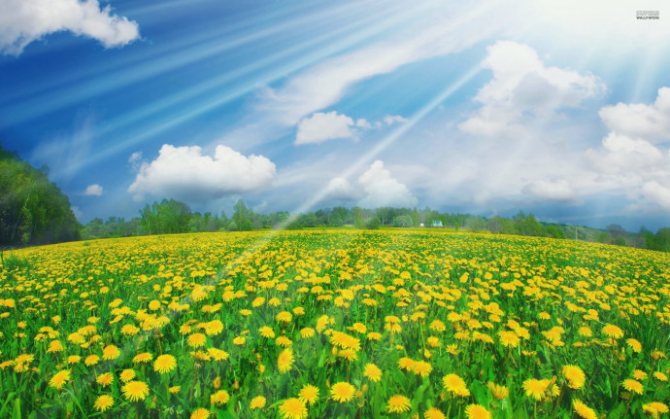

In Christianity, the dandelion as one of the "bitter herbs" became a symbol of the Passion of the Lord, and it is in this capacity that it is present in the images of the Crucifixion of the Madonna and Child. It is believed that the symbolism of the Emblem of the Passion of Christ is probably related to the bitterness of the leaves of this plant. In scenes of the Crucifixion, the dandelion is sometimes found in Dutch paintings.
Even so, dandelions are often given the epithet "sunny." It turns out that their life is a reflection of the profound processes of the sun. The bursts of rapid development of these flowers occur in the second year of the solar maximum. During these years, they densely fill all the lawns and bloom to the delight of themselves and the numerous hordes of insects collecting nectar and pollen.
This property of the dandelion is reflected in the second legend:
When he woke up in the spring, he looked carefully around him and saw the sun, which noticed the dandelion and illuminated him with a yellow ray.
The dandelion turned yellow and grew so fond of the sun that it never took its rapturous gaze off of it.
And so all his life, until he turns gray.
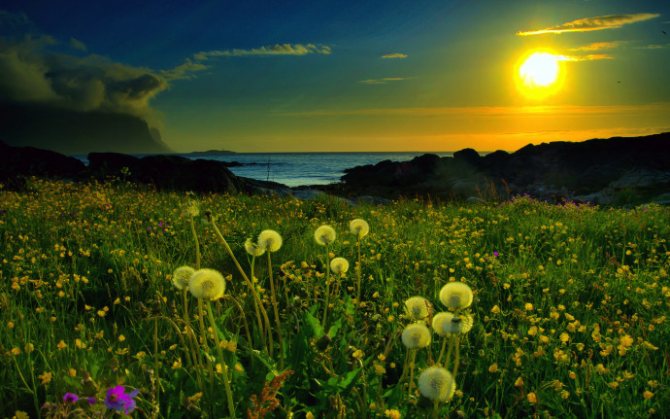

Another interesting legend about the Dandelion: One day in spring the Sun rose in the early morning, washed his face with warm rain, and went for a walk in the sky. And he sees that the land is good! And woods and meadows - all in green clothes, every blade of grass overflowing. And yet something is missing.
- What else can I do? - Sunny asked himself. - What would make people happy?
The Sun waved its golden sleeve - sunflakes splashed on the ground, and cheerful yellow lights on the meadows and paths - dandelions. They look like me! - Sunny was glad. And angry Winter nearby was hiding in a deep ravine in a deep forest. She heard that Sunny was laughing, and she looked out quietly from her hiding place. He looks up and there are lots and lots of little suns shining in the grass.
Features of the tattoo
Colorful watercolor artwork can look really gorgeous. Tattoo of a dandelion on the back, side or hip, executed as a real large-scale watercolor painting, will emphasize the romanticism, expressiveness of its owner. Works in this style evoke bright memories from childhood, when we first experimented with paints.
A small bright tattoo of a dandelion on your leg or wrist will look original and very graceful.
Interesting and unusual look tattoo in the style of dotwork. The flying flower seeds in this version seem even more light and airy.
The place for the tattoo should be chosen based on the shape and size of the sketch. A small round dandelion tattoo on the neck will look harmonious, while a sketch of an oblong shape will look much better on the forearm.
A larger dandelion tattoo on the shoulder blade or back will look appropriate.
The theme of these flowers is very popular now, as evidenced by the huge number of photos of tattoos with a dandelion on the Internet. However, you should not give up on the idea only because many have already implemented it. Even at a closer look, it becomes clear that most of the work is very similar to each other, and you can come up with something truly original, most importantly - connect your imagination.
The language of flowers. What do flowers mean
The language of flowers only at first glance seems simple, but it's not. The same flower can be interpreted differently and sometimes has a cardinally opposite meaning.
Take, for example, the lily. In ancient Rome, white lilies were considered the flowers of luxury and wealth; they were even depicted on coins.
The ancient Egyptians decorated the bodies of dead young girls with these flowers.
And in Germany, there is a belief that this flower grows under the influence of some unknown force on the graves of suicides and people who died a violent death.
But the French are crazy about lilies! The direct proof is the old royal coat of arms of France. It depicted a shield and three crossed lilies, symbolizing mercy, justice, and compassion. If you are given lilies in this country, it would be considered a show of respect.
In France, pansies are white as a symbol of death, but in England pansies are given to women as a sign of devotion and appreciation of love, they are a symbol of loyalty and purity.
The meaning of tattoos for girls
Dandelion tattoo is applied by girls with an easy character. They are cheerful and easygoing, they like to dream. They like adventure and travel. They look at life as a fascinating book, where a lot of good and interesting events. Flirtatiousness and playfulness are the main character traits of women with a tattoo of a dandelion. Depression is unknown to them.
Drawing with seeds flying away, girls with a philosophical view of the transience of life stuff up. They look into the future with optimism and enjoy every moment of existence.
If you see an image of a wilting flower on a woman's body, it signals unhappy love and worries about it.
So, what do flowers mean? alphabetically.
Azalea - A symbol of femininity, fragility, meekness, restraint, devotion; but at the same time, passion and sadness. It is customary to give azaleas before an unwanted separation.By presenting an azalea, you as if to say, "I hope you will wait for me," "Take care of yourself for me," "I believe you!" When a man gives this flower, he acknowledges that you are the one and only one for him.
Acacia (blooming). - Hidden love.
Ambrosia — Your love is mutual.
Anemone Means sincerity, directness.
Pansies. - An air kiss, fun, amusement, "Miss you!"
Aster - A symbol of love, grace, sophistication, and also - memories. In China, aster means precision. Ancient people believed that the smell of aster leaves, when burned, drove out snakes. Asters were placed in the graves of French soldiers, symbolizing mourning and remembrance of the dead. There is a myth that asters were created from cosmic dust when the Virgin looked down from heaven and wept. the poet Virgil believed that the altars of the gods were often decorated with asters.
Aster (white). - "I love you more than you love me!", "Tell me you love me again," "I can't think of anything but you. ".
Basil - disgust, hatred. A great reason to give this flower to someone you dislike, but to whom you for some reason cannot say so!
Begonia - Literally "Beware!", "Not everyone likes you as much as I do", "Know this: you're jealous!"
A bouquet of dried flowers - rejected love. If you want to put an end to someone's overly persistent advances, give the violator of your peace of mind such an original gift. Even if that person isn't familiar with the language of flowers, a dried bouquet will make them think, "I don't seem to be very welcome. "
Cornflower - "I dare not express my feelings to you"; delicacy, grace, simplicity, as well as - cheerfulness and loyalty. As a rule, it is customary to give them to young girls as a sign of affection. Such a gift can mean a proposal of friendship or a desire to resume an interrupted acquaintance. The giver of cornflowers should not be suspected of immodest desires. Blonde flowers.
Vicarious - "will you dance with me?"
Water lily (water lily) - Eloquence, persuasiveness, sincerity; "You must never deceive me," "Feelings in my soul are raging. A lily is given by a man who wants to convince you that he is your "soul mate." The giver asks you to trust him and promises to be gentle and caring.
Inflorescence - means beauty, "look out for me," "I will decorate your life." They are often given by seasoned catgirls. But the life of a loofah is as short-lived as the feelings of the giver.
Gardenia - Secret love, "You're beautiful!"
Goulteria - harmony.
Carnation - A woman's love, charm, fascination, honor and freedom, loyalty... The meaning of carnations in the language of flowers is different: it all depends on their color. Below is painted what what color means.
Carnation (white). - Wishing luck and success in everything. "may all your wishes come true". You are considered a very charming, bright and positive person, if you were presented with white carnations.
Carnation (yellow) - "Are you avoiding me?", "Are you offended?", "I want you to be more considerate."
Carnation (red). - Victory, success, leadership. A large bouquet of red carnations is customary to congratulate people of authority and respect, executives, directors. As for sweethearts, it is better to give red carnations in mixed bouquets.
Carnation (pink). - "I will never forget you," a symbol of motherly love. In the states, it is customary to give pink carnations on Mother's Day. The person who gives carnations wants to express their gratitude to you and assure you that you can count on their help and support under any circumstances.
Carnation (one color). - agreement, "YES!"
Carnation (striped) - rejection, "No!", "I won't be with you!"
Dahlia - whimsy, fickleness, fleeting infatuation. The giver of dahlias says, "I really like you, but I'm not promising anything," "I'm not ready for a serious relationship," "Why complicate things?"
Geraniums - Stupidity, recklessness. "You're a very frivolous person," "it's time to settle down."
Gerbera - A secret, a smile, flirtation, optimism. The person who gives gerberas expresses his sympathy to you and hints that together you will have a lot of fun. Gerberas - a universal positive gift: for friends, lovers, colleagues ... Feel free to choose these flowers if you want to share your great mood with someone or make a compliment.
Hyacinth - Game, curiosity, wisdom, unpredictability, achievement, sport. The range of emotions that can be expressed with the help of these colors is quite wide - much depends on the shade of hyacinths. But be sure that you won't be bored with the person who gave you hyacinths. Thanks to him, your life will be brighter.
Hyacinth (white). - constancy. "I am enchanted forever," "Belle, I will pray for you!"
Hyacinth (blue) - self-confidence, calmness, poise, consistency, integrity. "I know why I like you," "I have no doubt that you are right for me."
Hyacinth (yellow) - Jealousy, mistrust.
Hyacinth (red or pink) - play, "I know what you want," "There are lots of nice surprises waiting for you," "Our whole life is a game. "
Hyacinth (purple) - sadness, "Forget Me!"
Gladiolus - "I am truly sincere," "Fear nothing," "Give me a break." Gladiolus is the flower of gladiators. The giver of gladiolus is a person who is strong, reliable, and does not accept compromise.
Wisteria - "Welcome!"
Gloxinia - Love at first sight.
Hydrangea - "Remember me"; modesty, sincerity, hope. Also, coldness, indifference, callousness, callousness. Many peoples believe that hydrangea can ward off disease and misfortune.
Delphinium - modesty, unassuming; "I am ready to be your shadow," "call me."
Pink delphinium. - impermanence.
Fragrant peas. - departure, "Goodbye!", "Thank you for a wonderful time!"
Jasmine - sensuality, femininity, elegance and attraction. in India, jasmine is called "moonlight in love."
Tips for sketches
Dandelion tattoo sketch will look gracefully executed with light lines. For such a work is ideal for the stroke method of graphics or dotwork. Blurry silhouettes with colorful strokes better perform in the technique of watercolor. Realistic compositions based on photos are carried out in realism.
The plant will bring good luck and upward energy if the fluff of the plant flies upwards. Scattering around the head a cap of light fluff will create the effect of filling the space.
Recommended reading: Hemp tattoo
Such a composition is better to build in spacious areas. The perception of the sense of motion will depend on the direction of the flying fluff. It can be directed in a spiral or linearly in one direction.
You might also be interested in
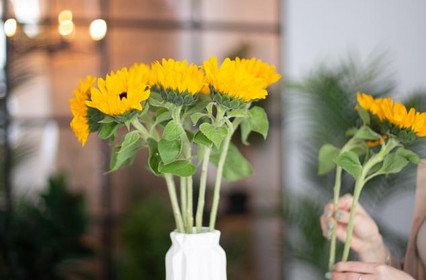

Flowers decorate our life, add joy and good mood. By getting a floral subscription, you can enjoy the beauty of flowers in your home or office space all the time, to give joy not only to yourself but also to loved ones.
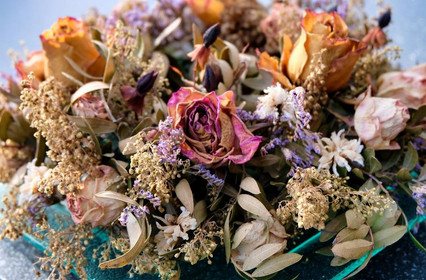

Dried flowers are widely used in everyday life to decorate interiors, as well as in the manufacture of cosmetics, scented pads, candles. It is not necessary to buy ready-made products, you can make them yourself.
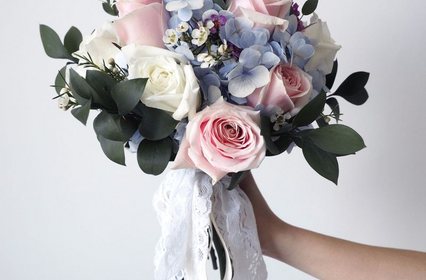

Source
